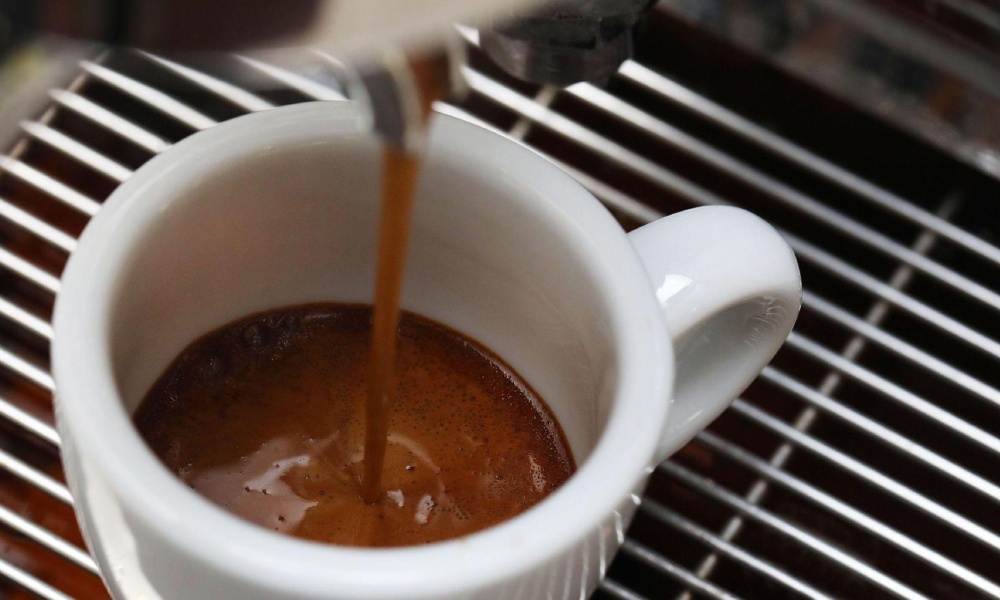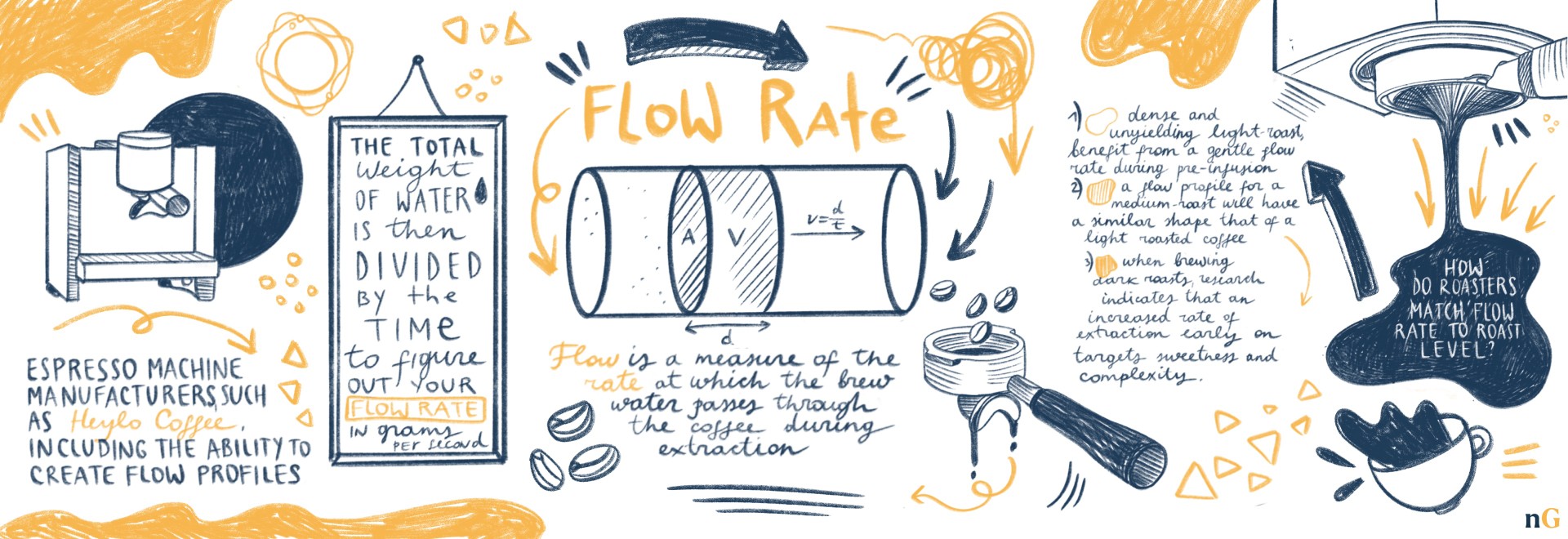A guide to adjusting espresso flow rate for different roast levels
Expert barista Matt Haw investigates the frequently overlooked relationship between flow rate and coffee roast level in espresso extraction.
For the modern barista, flow rate is an important variable of espresso extraction.
Defined as a measure of the speed at which brew water passes through the coffee during extraction, it is often confused with pressure profiling (the force applied to the water during extraction). However, as an output variable, flow rate is a measure of the effect of that pressure.
A good example of its real-world application can be observed when brewing very fresh coffee: typically, baristas set a flow rate that allows the coffee to release excessive carbon dioxide during brewing, thereby improving extraction and the purity of the shot.
As flow rate has increasingly taken centre stage, espresso machine manufacturers, such as Heylo Coffee, have taken note, including the ability to create flow profiles.
This has paved the way for baristas to endlessly tweak and perfect the flow rate depending on the coffee, with the goal – like any variable – to bring out all its full spectrum of characteristics.
Although factors such as grind size and water temperature can have a significant influence on the most suitable flow rate, the coffee’s roast level tends to provide the biggest headache for even the most experienced baristas. But it’s not all as complicated as it might seem.

How is flow rate measured? And how does flow rate affect extraction?
Flow rate is typically calculated by measuring the quantity of water that flows from an espresso machine group head over a fixed amount of time. The total weight of water is then divided by the time, giving us a figure in grams per second (g/s).
There are a wealth of guides that dive into flow calibration. But, as with many other brewing variables, it is something that requires significant experimentation to perfect.
In theory, controlling the rate at which brew water passes through the coffee – or flow profiling – will enable the barista to precisely target acidity, sweetness, bitterness, and body to create a unique espresso shot.
It’s often tempting to jump to conclusions when experimenting with brewing variables.
Generalisations aside, flow rate has been clearly shown to affect extraction in several measurable ways.
Low flow rate, for example, increases the contact time between the coffee and the water. This is desirable in brew methods that use coarser grind settings, such as French press and cold brew.
However, in espresso, which typically uses a finer grind size and darker roasted beans, this can lead to over-extraction. The requisite conditions for a low flow rate also mean that pressure never gets to a level at which it plays a sufficient role in extraction.
In contrast, an excessively high flow rate often doesn’t provide enough time for the water to extract all the desirable flavour compounds from the coffee. Furthermore, increasing amounts of pressure are required to create a faster flow. The more pressure used, the more extraction stands to be negatively affected.
Two key texts on espresso extraction, Espresso Coffee: The Science of Quality and Espresso Extraction: Measurement and Mastery, outline how optimal flow occurs at around nine bars of pressure. When the pressure exceeds nine bars, the coffee bed becomes impacted, reducing flow rate and increasing the chances of over-extraction.
Matching flow rate to coffee roast level
Controlled variations in flow rate allow baristas to create brewing profiles designed to bring out the best from different roast levels. In a specialty coffee sector that is experiencing an ever-growing diversity of roast profiles, this is becoming a critical aspect of espresso preparation.
Dense and unyielding light roasts have been shown to benefit from a gentle flow rate during pre-infusion. This allows the grounds to saturate and bloom, facilitating the extraction of the complex acids and sweetness that set light roasts apart from other coffees.
To avoid sourness, some sources suggest beginning the extraction with a longer pre-infusion time of up to seven seconds and a slow flow of 2-3g/s. In theory, this breaks down the acidity and brings out the original flavours of the coffee.
A flow profile for a medium-roast will have a similar shape to that of a light-roasted coffee. However, to accentuate body and sweetness, preinfusion should be a little more aggressive: five seconds at 5-6g/s. According to the same article by Whole Latte Love, flow should then be “increased by around 30% at 6.5-8g/s,” tapering off slightly towards the end to give the shot an extra finish.
When brewing dark roasts, research indicates that an increased rate of extraction early on targets sweetness and complexity. Coffeekiwi.com recommends “lowering the flow rate from 10g/s to 4g/s after pre-infusion”. This targets the desirable flavour compounds and avoids the bitterness often associated with this roast level.
Ultimately, each coffee is different, and even slight variations in flow profile can target very different flavour compounds. It is up to baristas and prosumers to experiment with this newly-accentuated espresso brewing variable themselves to derive the best results.








